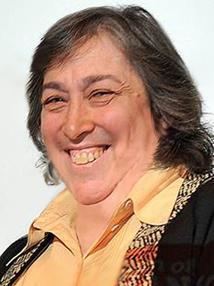Name Naomi Chayen | ||
 | ||
Known for macromolecular crystallization; nucleation; microbatch (accounting for 1,313 PDB depositions) Awards Woman of Outstanding Achievement for Innovation and Entrepreneurship Commendation 2012 (WISE) | ||
Why do we use crystals to design new medicines?
Naomi Chayen is a Professor of Biomedical Sciences at Imperial College London where she heads the crystallization group in Computational and Systems Medicine, Department of Surgery and Cancer, Faculty of Medicine. She specialises in the crystallisation of proteins and other biological macromolecules for structural biology.
Contents
Education
Chayen obtained a BPharm (pharmacy) and an MSc in pharmaceutical sciences (with Distinction) from the Hebrew University, Jerusalem, and a PhD in biochemistry in 1984 from Brunel University. Her doctoral research was conducted at the Kennedy Institute of Rheumatology, London.
Career
Her early posts were at the Biophysics Section of Imperial College London, where she was mentored by John M Squire and by David Blow, pioneers in the fields of muscle structure and X-ray crystallography respectively. She was promoted to Research Fellow at the Crystallography Group, Biophysics Section in 1992 and to Principal Research Fellow in 1999. In 2005 she became Professor of Biomedical Sciences at the Faculty of Medicine. Chayen has led or participated in courses, workshops and conference sessions related to protein crystallisation worldwide, and served as president of the International Organisation for Biological Crystallisation (2006-2010). She has discussed her research on the BBC, ITN, Channel 4 news, NPR and CBC, and in newspapers including The Times, The Guardian, Financial Times and The Independent. Her research was highlighted in Scientific American, New Scientist, and at an exhibition at the Royal Society.
Research
Her work combines fundamental understanding of the crystallization process with the design of methodology for producing crystals of proteins of medical and industrial interest. Some of her work has been patented and commercialised.
Chayen introduced a new means of inducing crystal nucleation by designing surfaces with nanopores of similar sizes to protein molecules. Her experiments on such porous materials have led to the development of porous silicon, Bioglass (commercialised as “Naomi’s Nucleant”), and Molecularly Imprinted Polymers for the specific aim of protein crystallisation ("Chayen Reddy MIP").
Chayen developed (with Blow, Shaw Stewart and Maeder) a nano-scale technique (Microbatch) and one of the first robotic systems for crystallisation (IMPAX), which inspired the next generation of robots for high-throughput protein crystallisation. She designed a variety of simple techniques utilizing oils for controlling the kinetics of crystallisation in order to improve crystal order. She also developed new ways to improve crystal quality by separating the nucleation and growth stages of crystallization.
She was a principal investigator of crystallization experiments sent into space with NASA, the European Space Agency, Glavcosmos and on the International Space Station. She has co-authored a book, Macromolecular Crystallization and Crystal Perfection published by Oxford University Press and edited a book on Protein Crystallization Strategies for Structural Genomics.
Awards
Chayen's awards include a Woman of Outstanding Achievement for Innovation and Entrepreneurship Commendation (2012) awarded by UK Women in Science and Engineering, Investigator of the year prize of the Life Sciences Awards (2011) presented by Select BioSciences, and Innovator of the year (2011) by CWT Everywoman in Technology Award for scientific research translated into new technologies and products.
